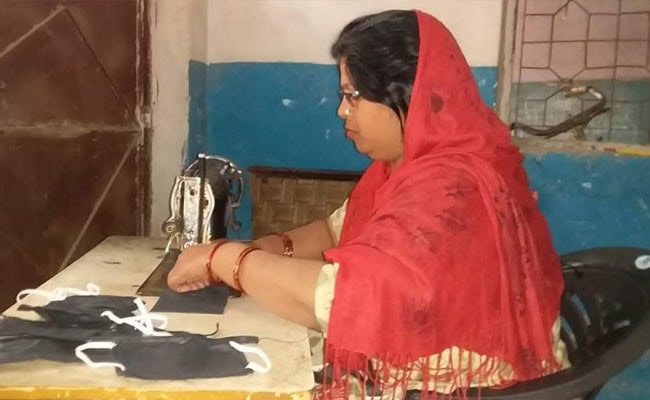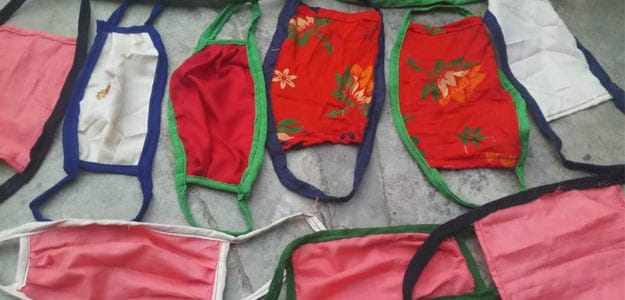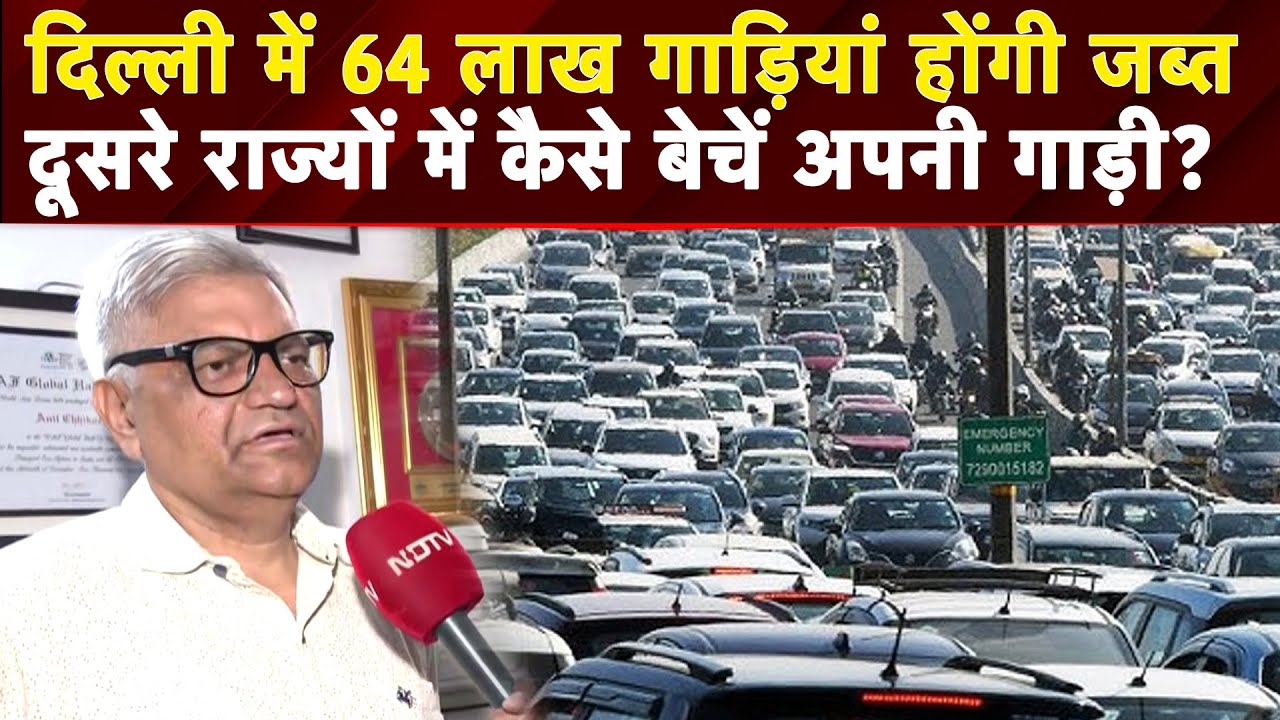- Home/
- Containing Coronavirus: Chintan, Delhi Based NGO Upcycles Old Clothes Into Masks, Distributes It Among Waste Pickers
Containing Coronavirus: Chintan, Delhi Based NGO Upcycles Old Clothes Into Masks, Distributes It Among Waste Pickers

As the fight against the novel coronavirus (COVID-19) deepens, the opinion is shifting in favour of wearing masks all the time. According to the recent government guidelines, individuals not suffering from any medical conditions or having breathing difficulty may use the handmade reusable face cover, particularly when they step out of their house. The Office of the Principal Scientific Advisor to the government of India has even issued a step by step do it yourself (DIY) guide on homemade face masks and their usage. But even before the government decided that everyone should wear masks, Chintan, a non-governmental organisation (NGO) working for the environment, started stitching and distributing masks among waste pickers. The initiative has been undertaken to contain the spread of the disease and the outbreak from entering stage three – community transmission - when a patient not exposed to any infected person or one who has not travelled to any of the affected countries tests positive.
As part of the initiative, Chintan has trained 70 senior trainees (teachers) working in the organisations's informal learning centres to upcycle old clothes into face masks. Talking to NDTV about the idea behind the initiative and how it is being implemented, Chitra Mukherjee, Head of Advocacy and Policy at Chintan said,
We run informal learning centres for children of waste pickers. There we have senior trainees who educate them before they are enrolled in municipal schools for formal training. Now when the centers are closed because of the lockdown and we need masks, our trainees have taken it upon themselves to upcycle old clothes into face masks for waste pickers. We trained our senior trainees working in different communities to make masks in the safety of their own homes and distribute it among waste pickers and their families. These masks are not only for the parents of our students but for the entire waste pickers' community.
Also Read: A Delhi Based NGO Undertakes Awareness, Sanitisation And Thermal Screening To Help Fight Coronavirus
A team of 70 senior trainees makes close to 350 masks, daily. As of now, the team has created 4,680 pieces of masks of which 3,560 have already been distributed in different areas including Vivekananda Camp, Takiya Kale Kha, Sihani, Dallupura, Bhalswa, JJ Bhopura.
Further elaborating on the idea behind stitching masks at home and distributing it among waste pickers for free, Ms Mukherjee said,
In poor communities like those waste pickers live in, it is difficult for them to procure masks and yet they need it the most. They live in cramped social spaces and social distancing is a luxury there. Also, it's difficult for waste pickers' community to buy a mask and keep changing it every three to four hours because of the two reasons - unavailability of masks and lack of affordability.
Also Read: These Hunger Heroes Are Feeding The Poor And Hungry In Delhi Amid The COVID-19 Lockdown

Old cotton clothes upcycled into face masks to protect waste pickers' community from the novel coronavirus
Though the masks are fashioned out of old clothes, the team ensures hygiene and follow all the precautionary measures. Explaining the making of face masks, Anita Sihani, a senior trainee said,
Since we all are in isolation, we are using the material available with us at home. For instance, we take old cotton bedsheets to make masks. Before using the cloth, we wash it thoroughly and while making masks, we ensure hand hygiene. As far as the technique is concerned, we have seen the face masks available in the market and we are replicating the same design.
The whole point of wearing a mask while stepping out of the house nullifies if it's not worn and used properly. Keeping this in mind, while distributing the masks, the Chintan team ensures everyone knows how to use a mask.
We repeatedly tell them to wash and change the mask every three to four hours, said Ms Mukherjee.
Even before the lockdown began and the team decided to make masks, Chintan was creating awareness among waste pickers through children coming to its informal centers. In early March, senior trainees had started training children; they would teach the right way of washing hands, coughing etiquette – coughing into the crook of the elbow and other preventive measures and ask the children to pass on the message in their respective communities. Following this, some people even started using a handkerchief as a face cover.
After seeing the hard work of you all, we have also been optimistic. We will be careful and not afraid, said 30-year-old Islamuddin, from Takiya Kale Kha.
also read
Important To Implement Environmental Rules To Sustain Gains Of Lockdown: Union Environment Minister Prakash Javadekar
PTIMumbai Based Green Champion Is Striving To Make The City The Cycling Capital By 2030
Reported by Ambika Singh KahmaDr Naresh Trehan On The Learnings From The Coronavirus Pandemic And How Technology Can Help Save The Environment
Written by Aastha Ahuja, Edited by Sonia Bhaskar
Latest Stories
- Edited by Aastha Ahuja | Monday July 14, 2025 , New Delhi
Cloud seeding is the process of adding special substances to clouds to make it rain or snow in areas experiencing water scarcity, less snowfall, or to reduce hail and clear fog.
- Edited by Nikhil Pandey | Saturday July 12, 2025
A study led by the University of York has found that sectors like shipping, aviation, and construction face much weaker legal controls on nitrogen oxide emissions compared to home heating or cars.
- Danielle Wilhour, The Conversation | Friday July 11, 2025 , Boulder
If you are one of the 39 million Americans in the US living with migraines, there's a good chance an intense headache will begin when the weather shifts.
- Reported by Ishika Verma | Thursday July 10, 2025 , New Delhi
In a big shift for Delhi's air quality this monsoon, five of Delhi's 13 pollution hotspots recorded 'Good' Air Quality Index (AQI) readings on Thursday - a first for the month of July.
- Indo-Asian News Service | Thursday July 10, 2025 , New Delhi
Air pollution may not only affect your heart and lungs but can also raise the possibility of developing meningioma -- a typically noncancerous brain tumour -- according to a study.
................................ Advertisement ................................
Latest Videos
Opinion
Opinion | Why Indians Have Just Given Up On Air Pollution CrisisTanushree Ganguly
Friday December 20, 2024While some may argue that people in Delhi are now more aware of air pollution than they were a decade back, my rebuttal would be that awareness does not mean that people are concerned.
Opinion | You Must Outrage Over Filthy Air More Than Once A YearJyoti Pande Lavakare
Tuesday December 10, 2024Delhi welcomed us with monsoon rains and mangos. We were home. Fast forward a couple of years, in the winter of 2012, I found myself in denial about something other parents, mostly expats, were calling toxic air.
Opinion | Delhi's Air Pollution Situation Is Like A Bad MarriageNishtha Gautam
Friday November 22, 2024On a good day, such as today, the AQI reading in Delhi is 407. We are jubilant at the sickly sunshine trickling through the slightly dissipated smog. At least its not 1600.
दिवाली... पराली... सियासी जुगाली!Ashwini kumar
Monday November 18, 2024दिल्ली-एनसीआर में प्रदूषण का समाधान तो आज तक मिला नहीं. हर साल चिंतित होकर हम-आप सांसों की तकलीफ के साथ-साथ दिल और ब्लड प्रेशर के मरीज भी क्यों बनें?
घर में कैद बुजुर्ग और हांफते लोग, दिल्ली की सांसों में घुला ये कैसा रोग?Nidhi Kulpati
Friday November 08, 2024हमारी हवा जहरीली हो रही है. गुरुवार की शाम को जब मैं इस मुद्दे पर लिखने बैठी तो AQI लगातार 400 पार जाकर दम घोंट रहा था. बहुत लोगों को यह मामला बोरिंग लगे, लेकिन जब आप अपने साथ काम करने वालों को खांसते-हांफते देखते-सुनते हैं, तो चिंता होने लगती है. सुबह उठते ही दरवाजे खिड़कियां खोलने के लिए डॉक्टर मना कर रहे हैं. बड़े बुजुर्गों के लिए तो मॉर्निंग वॉक बाहर की दुनिया से सीधे संपर्क का ज़रिया है, लेकिन डॉक्टर इसकी भी मनाही कर रहे हैं.


















